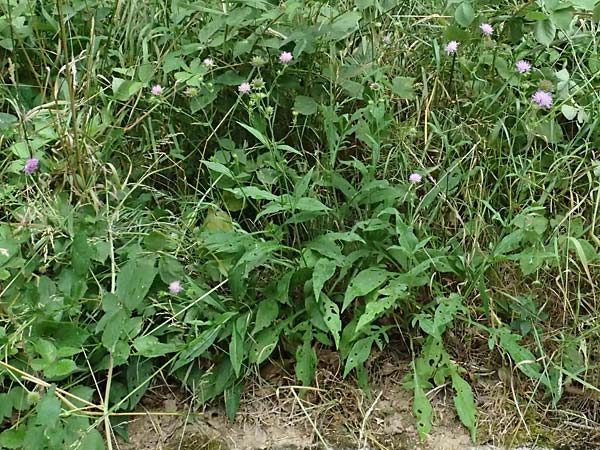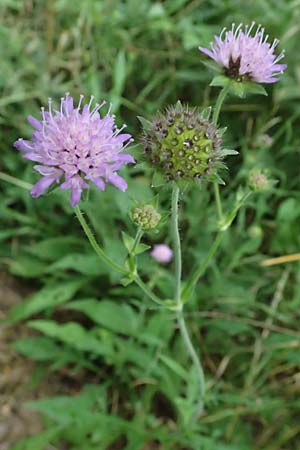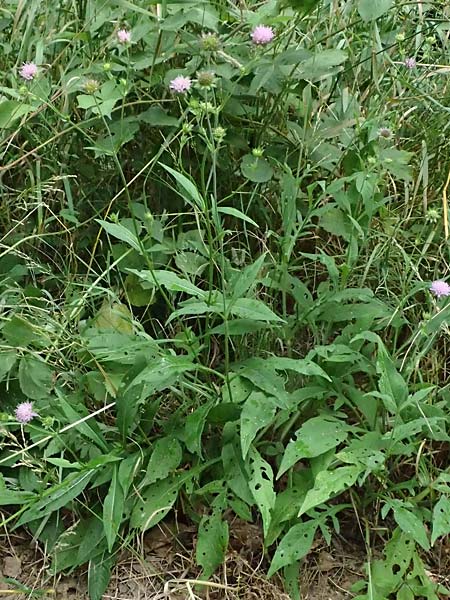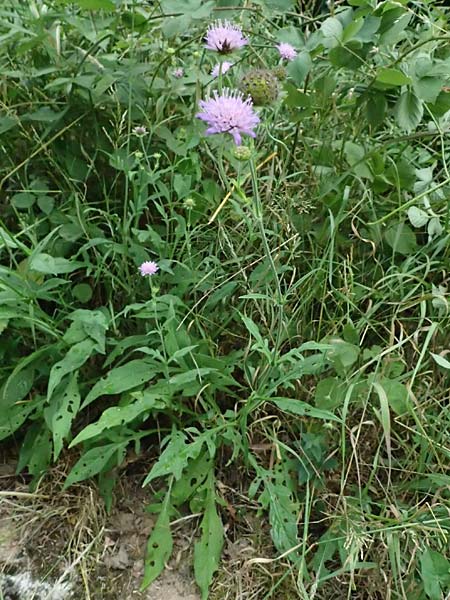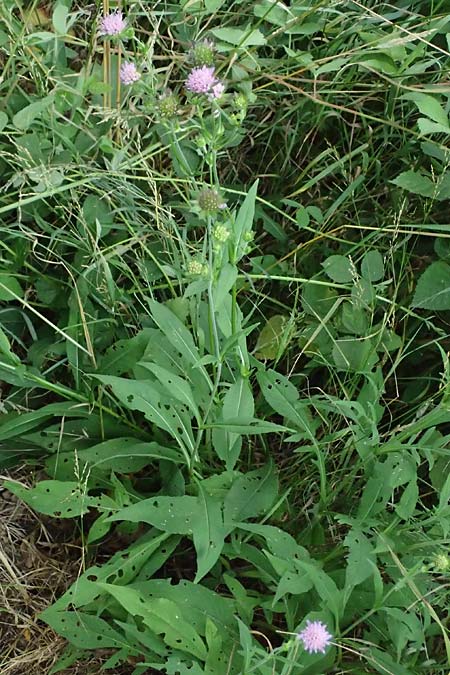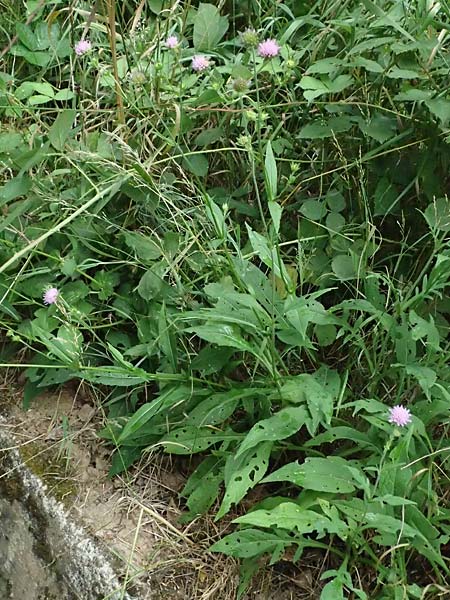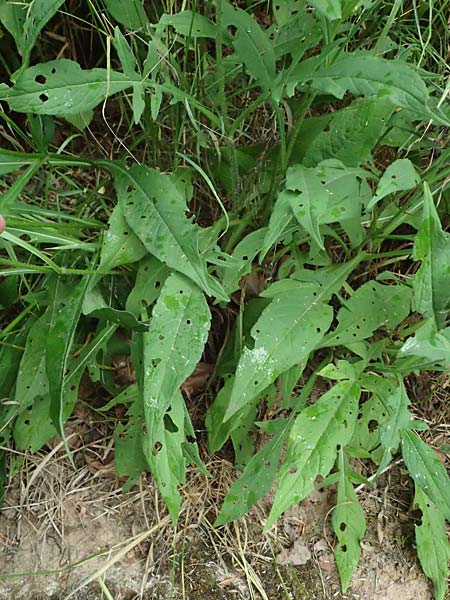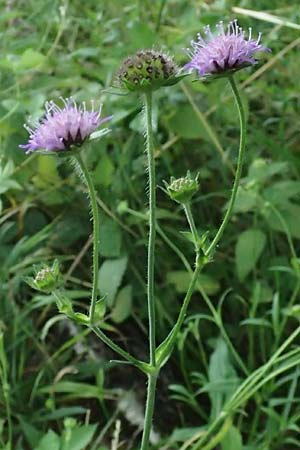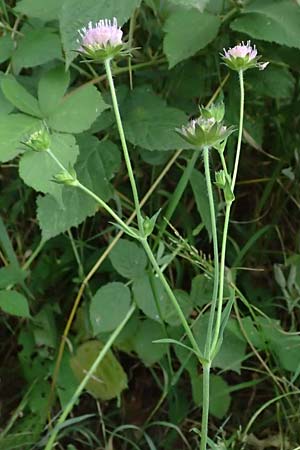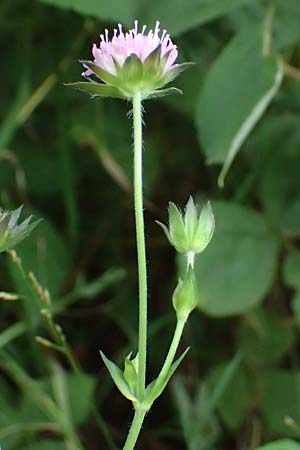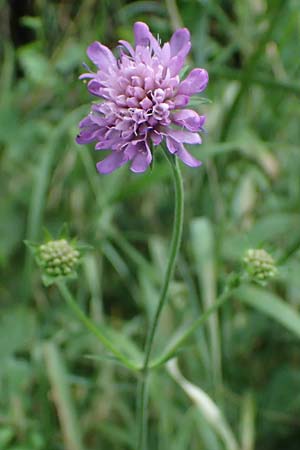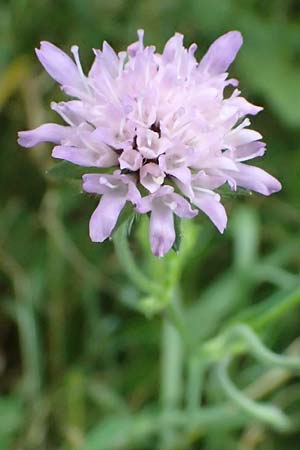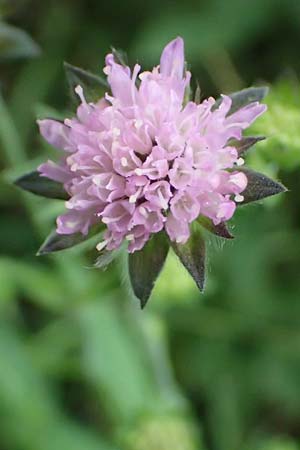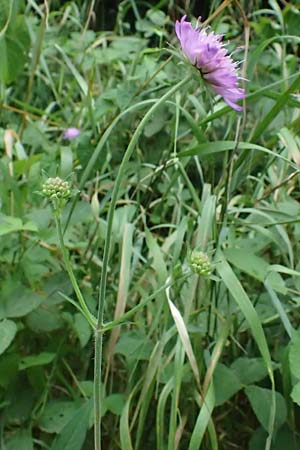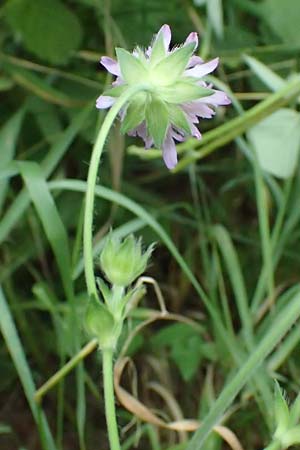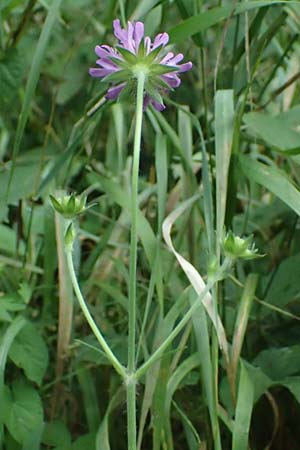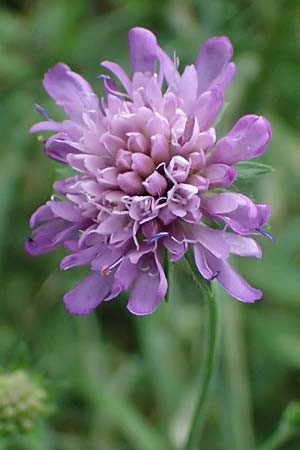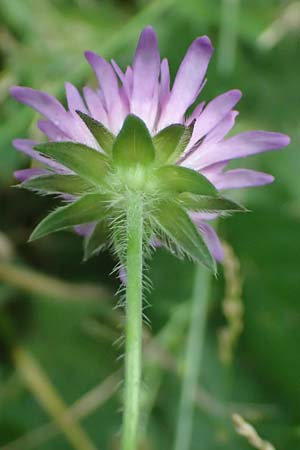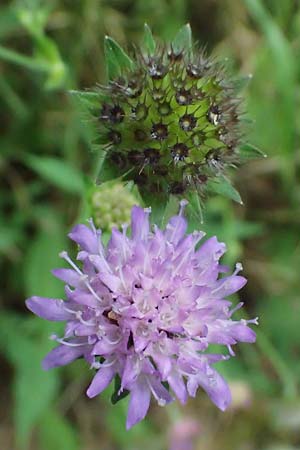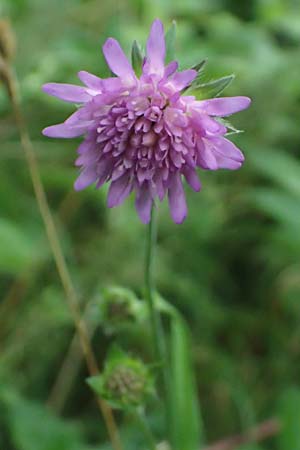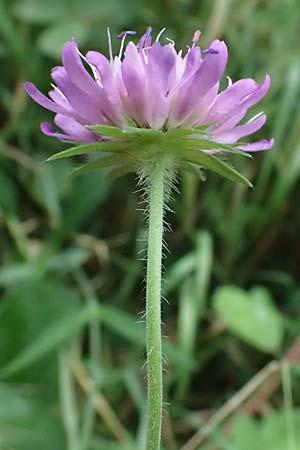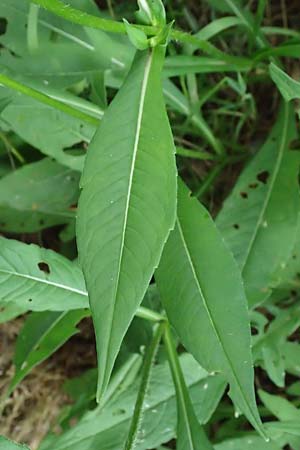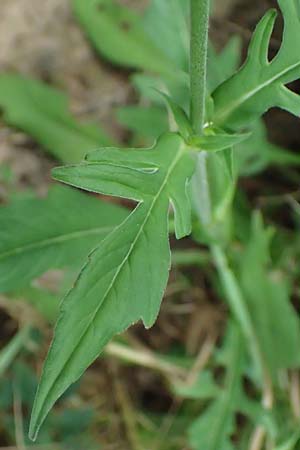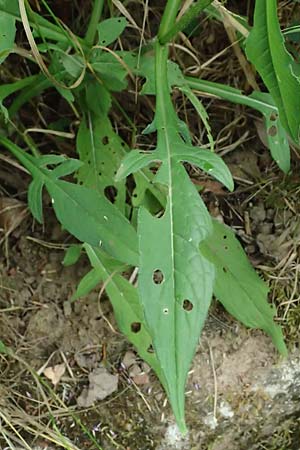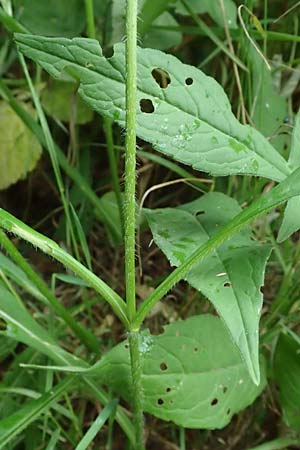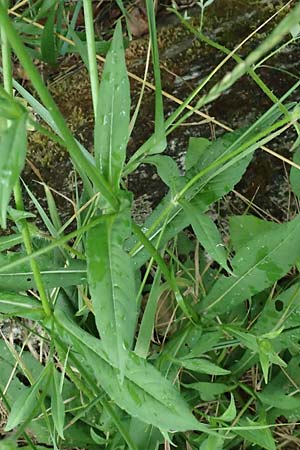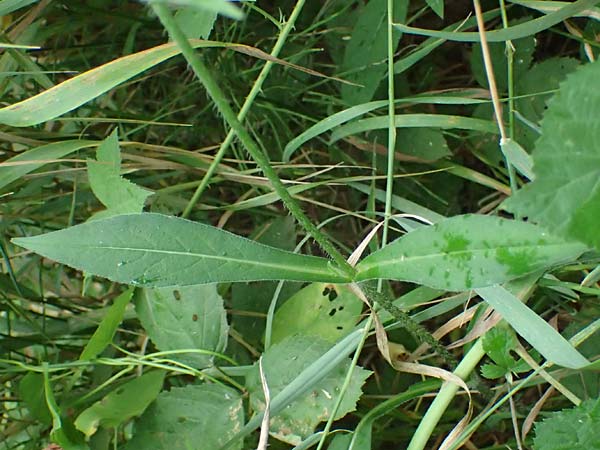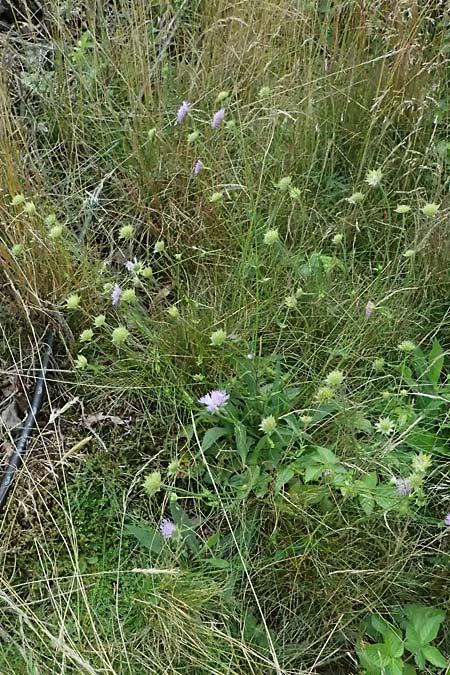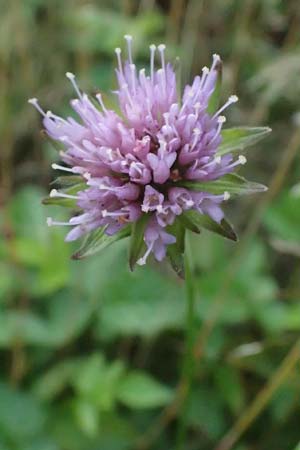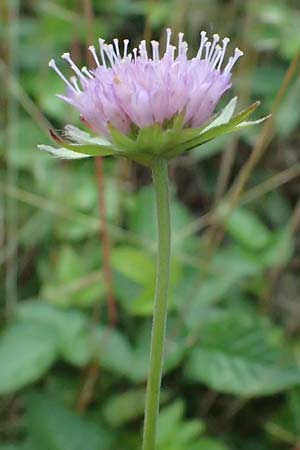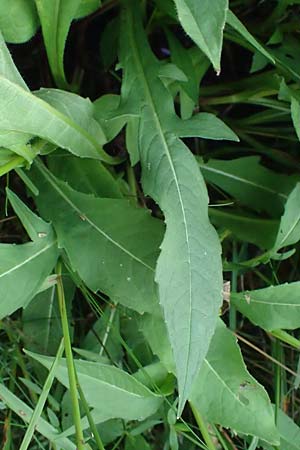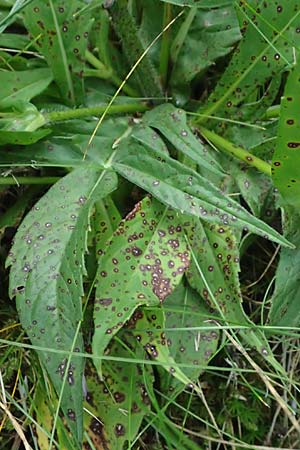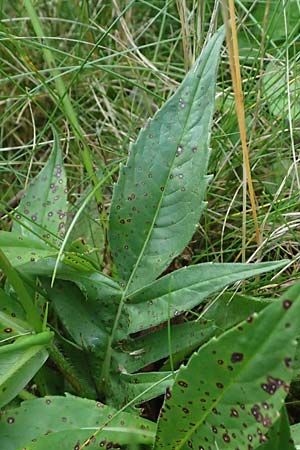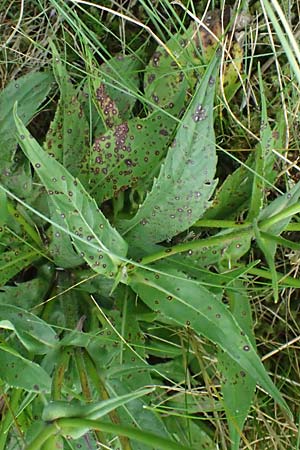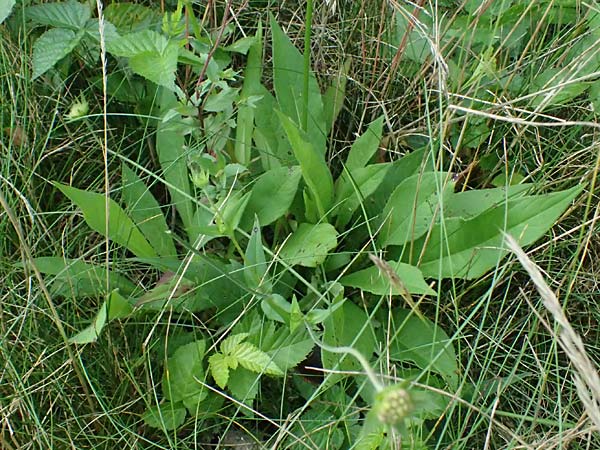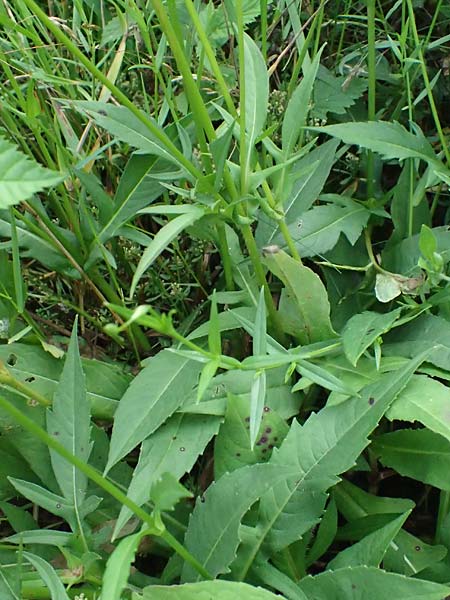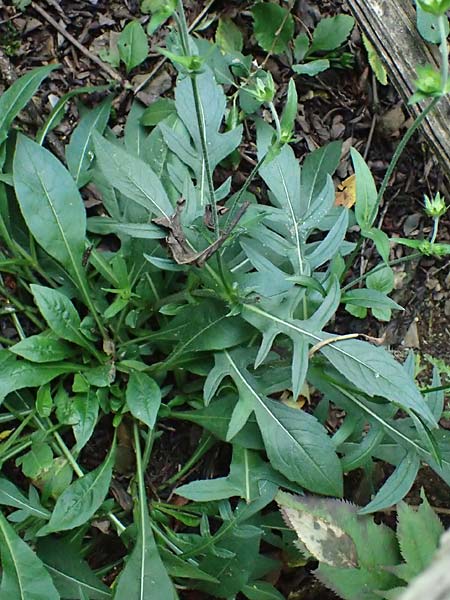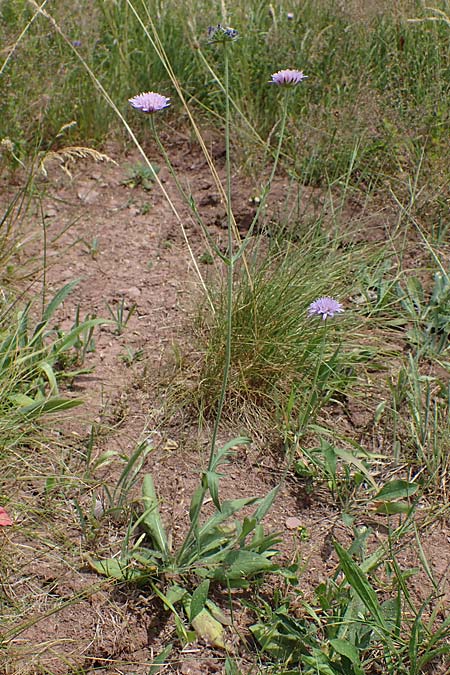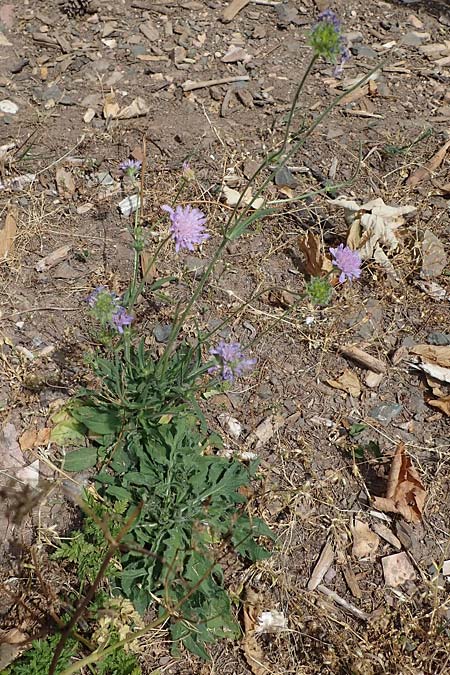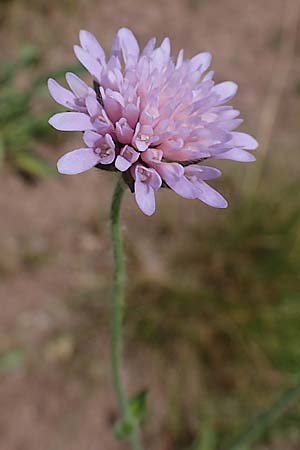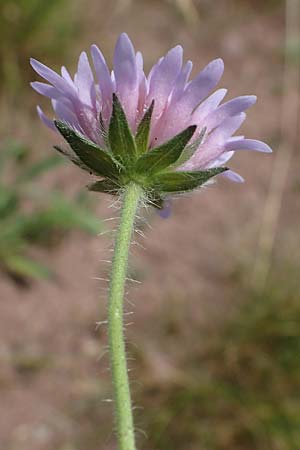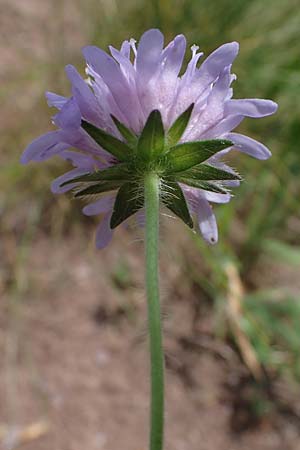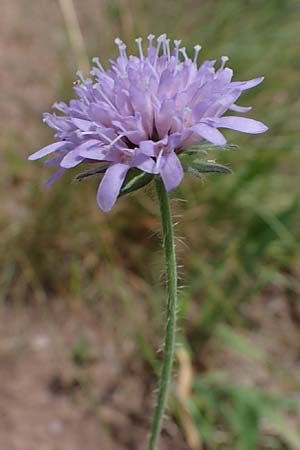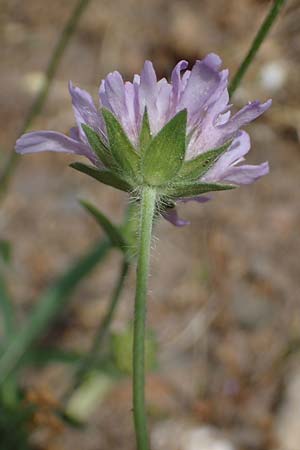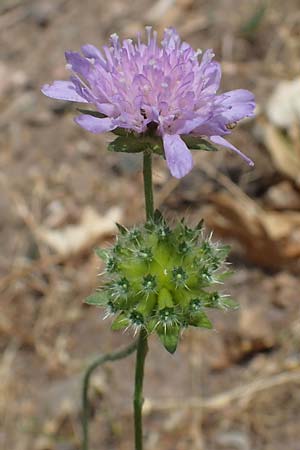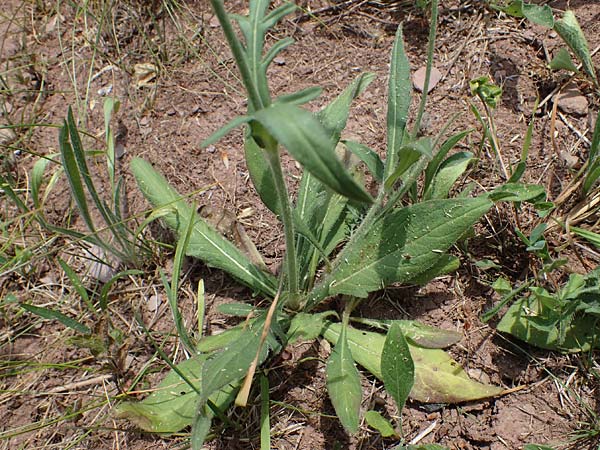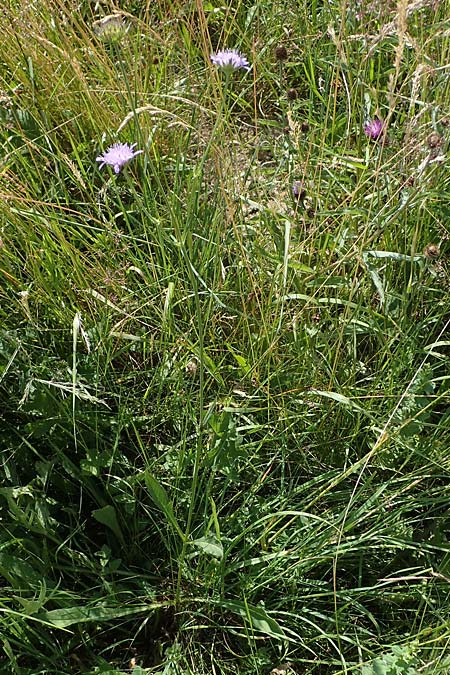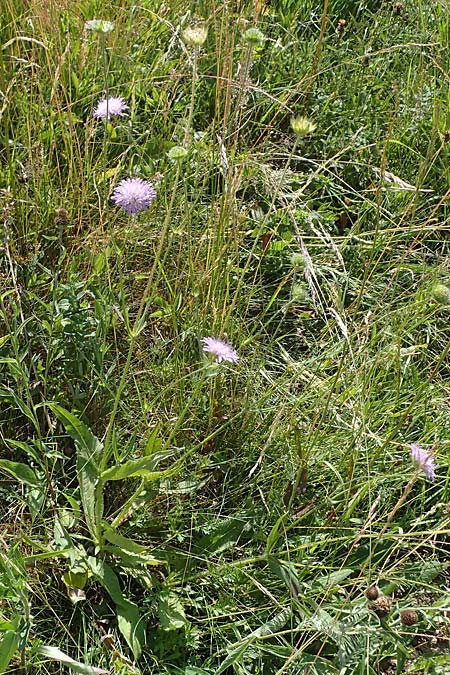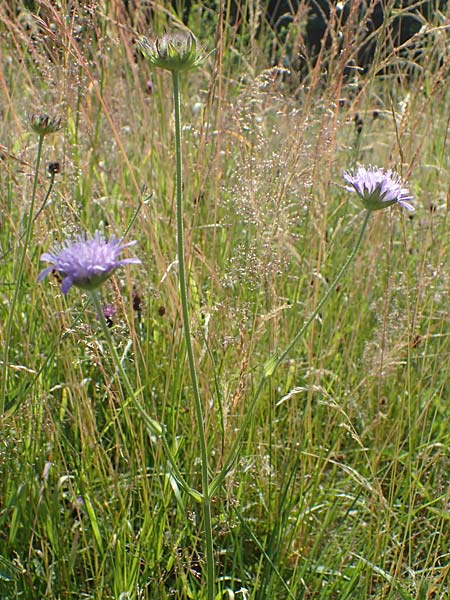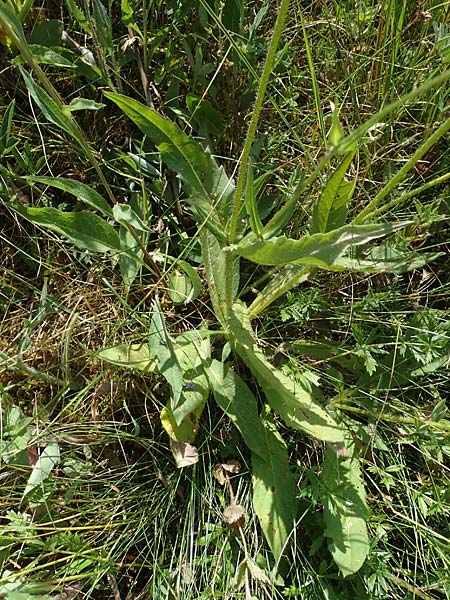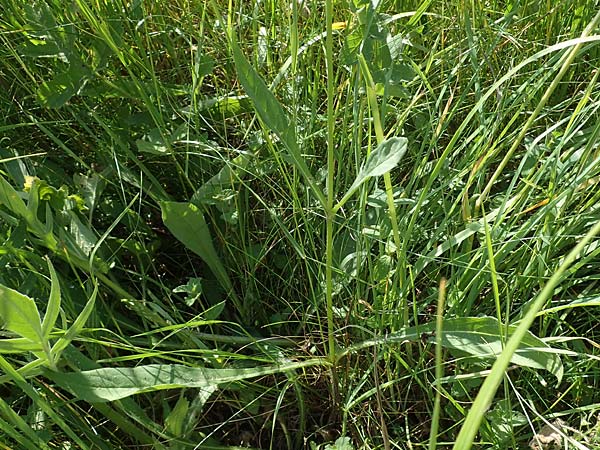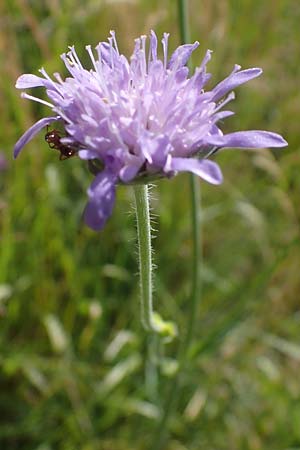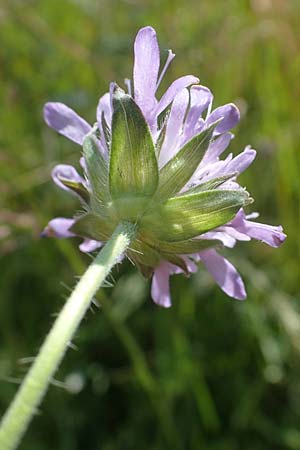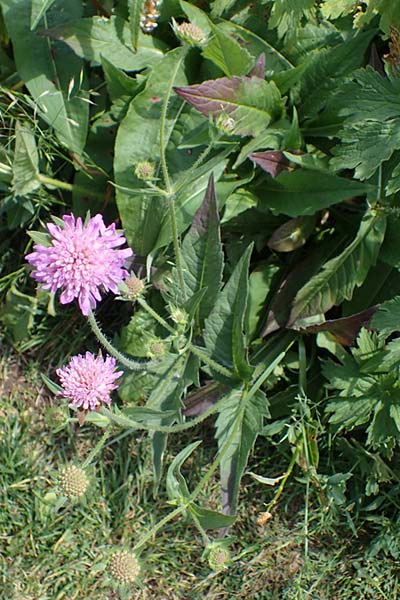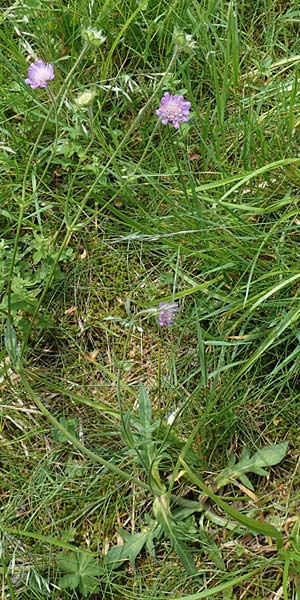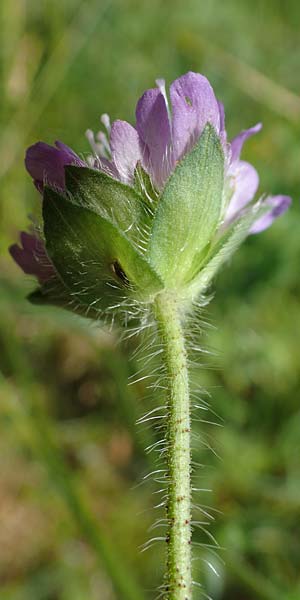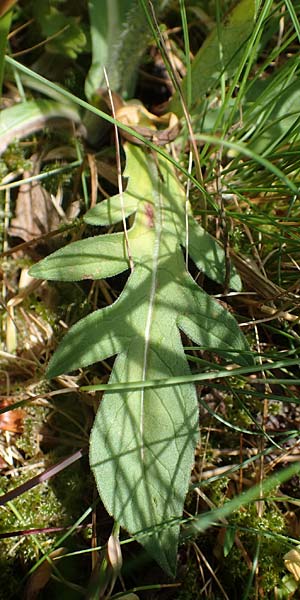Die Zierliche Witwenblume Knautia gracilis ist der Acker-Witwenblume Knautia arvensis recht ähnlich,
sie hat aber kleinere Blüten und kaum eingeschnittene Blätter.
Ihr Hauptverbreitungsgebiet liegt in Zentral- und Ostfrankreich, beschrieben wurde sie nach einem Exemplar aus Bitche.
Wenn es reine Knautia gracilis in Deutschland gibt, dann am ehesten in der Südpfalz, siehe die Bilder von Bad Bergzabern.
Bei Erndtebrück am Rothaargebirge sah ich auch ein relativ homogenes Vorkommen.
An zwei Stellen im nördlichen Teil von Rheinland-Pfalz, die ich kenne,
bei Nonnweiler und bei Allenbach, gibt es zwar wenige Knautia gracilis, doch sie sind vergesellschaftet mit Knautia arvensis,
und es gibt mehr Exemplare mit intermediären Eigenschaften, an beiden Standorten wachsen aber nur relativ wenige Knautia-Pflanzen.
In der Rhön konnte ich an der Wasserkuppe keine Knautia gracilis, und am Schwabenhimmel unterhalb dem Heidelstein unter tausenden Knautia arvensis
nur sehr wenige Pflanzen finden, die man als Knautia gracilis bezeichnen könnte.
Knautia gracilis is quite similar to Knautia arvensis,
but it has smaller flowers and rarely dissected leaves.
Its main distribution area is in Central and Eastern France, it has been described according to a specimen from Bitche.
If there is pure Knautia gracilis available in Germany, then most likely in the Southern Palatinate, see the photos from Bad Bergzabern.
Near Erndtebrück at the Rothaar mountains I saw a relative homogeneous population, too.
At two places in Northern Rhineland-Palatinate that I know near Nonnweiler and near Allenbach, there are few Knautia gracilis available, but they are associated with Knautia arvensis,
and there are more plants with intermediate attributes, both locations contain only relative few Knautia plants.
In the Rhön I couldn't find any Knautia gracilis on the Wasserkuppe, and at the Schwabenhimmel below the Heidelstein between thousands of Knautia arvensis only very few plants,
that could be called Knautia gracilis.
|
